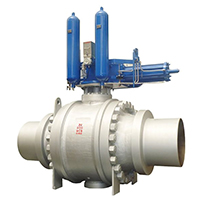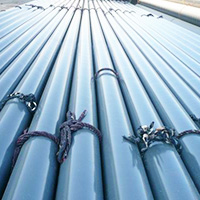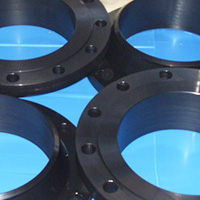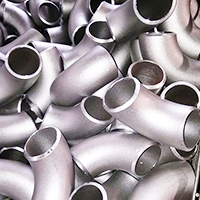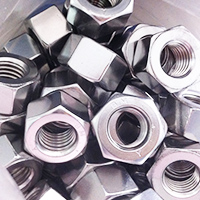The Wafer butterfly valve itself does not have a flange and relies on pipeline flange compression connection. Generally, double headed bolts are used for connection. The flange butterfly valve itself has a flange, which is the same as ordinary gate valves,Its function is similar, and it is used for gas pipelines in the sulfuric acid industry.Butterfly valves are widely regarded by users as having good sealing performance, light operation, secondary corrosion, high temperature resistance, convenient and flexible operation, and safe and reliable use. They have been widely promoted and used.The flange butterfly valve has a simple structure, small volume, and light weight, and is only composed of a few parts.And it can be quickly opened and closed by rotating 90 °, with simple operation. At the same time, the valve has good fluid control characteristics. The butterfly plate of the butterfly valve is installed in the diameter direction of the pipeline. In the cylindrical channel of the butterfly valve body, the disc-shaped butterfly plate rotates around the axis, with a rotation angle between 0 ° and 90 °. When rotated to 90 °, the valve is fully open.
When the flange butterfly valve is in the fully open position, the thickness of the butterfly plate is the resistance when the medium flows through the valve body, so the pressure drop generated through the valve is very small, so it has good flow control characteristics. Butterfly valves have two sealing types: elastic sealing and metal sealing. Elastic sealing valves, the sealing ring can be embedded on the valve body or attached to the periphery of the butterfly plate.
Classification of flange butterfly valves by connection method: (1) Wafer type butterfly valve: The butterfly plate of the wafer type butterfly valve is installed in the diameter direction of the pipeline. In the cylindrical channel of the butterfly valve body, the disc-shaped butterfly plate rotates axially, with a rotation angle between 0 ° and 90 °. When rotated to 90 °, the valve is in a fully open state. The wafer type butterfly valve has a simple structure, small volume, and light weight, and is only composed of a few parts. And it can be quickly opened and closed by rotating 90 °, with simple operation, and the valve has good fluid control characteristics. When the butterfly valve is in the fully open position, the thickness of the butterfly plate is the resistance of the medium flowing through the valve body, so the pressure drop generated through the valve is very small, and it has good flow control characteristics. There are two types of sealing: elastic sealing and metal sealing. Elastic sealing valve, the sealing ring can be embedded on the valve body or attached to the periphery of the butterfly plate.(3) Lug type butterfly valve; (4) Welding type butterfly valve: It is a non enclosed butterfly valve widely used in production processes such as building materials, metallurgy, mining, and power. It is used for connecting, opening and closing, or regulating the medium quality on pipelines with a nominal pressure of 0.1Mpa and a medium temperature ≤ 300 ℃.
What is the difference between flange butterfly valves and clamp butterfly valves
Executive standard for flange butterfly valves: Design and manufacturing: GB/T12238-89 "General purpose valve flanges and clamp connection butterfly valves" JB/T8527-1997 "Metal sealed butterfly valves" JIS flange size: PN=1.0MPa according to JB/T82.1-94 (i.e. original standard JB82-59) "Raised face butt welded steel pipe flanges", PN=1.6MPa according to GB9113.3-88 "Raised face integral steel pipe flanges", PN=2.5MPa according to GB9113.4-88 "Raised face integral steel pipe flanges"; Structural length: According to GB12221-89 "Structural length of flanged metal valves"; Inspection and testing: In accordance with the provisions of GB/T13927-92 Pressure Testing for General Valves;
The characteristics of flange butterfly valves:
1. Compact and lightweight, easy to disassemble and repair, and can be installed in any position
2. Simple and compact structure, low operating torque, quick opening with 90 ° rotation
3. The flow characteristics tend to be straight, and the regulation performance is good
4. The connection between the butterfly plate and the valve stem adopts a pin free structure, which overcomes the possibility of internal leakage points 5. The outer circle of the butterfly plate adopts a spherical shape, which improves the sealing performance and extends the service life of the valve. It maintains zero leakage even after opening and closing under pressure for more than 50000 times
6. The sealing element can be replaced and the sealing is reliable, achieving bidirectional sealing
7. Butterfly plates can be sprayed with coatings according to user requirements, such as nylon or polytetrafluoro
8. This valve can be designed with flange connection and clamp connection
9. The driving mode can be selected as manual, electric, or pneumatic
The flange butterfly valve is suitable for industries such as water supply and drainage, sewage, food, heating, gas, ships, hydropower, metallurgy, energy systems, and light textiles with a temperature ≤ 120 ℃ or ≤ 150 ℃ and a nominal pressure ≤ 1.6MPa. It is particularly suitable for bi-directional sealing and valve body prone to corrosion, as a flow regulation and interception medium

